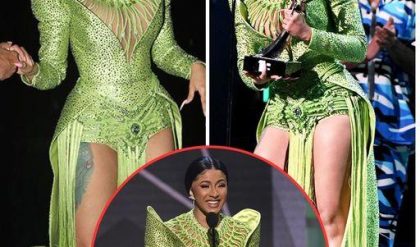Known for her bold lyrics and energetic style of hip-hop and trap music, Cardi B has become one of the biggest names in popular music over the past few years.

Since breaking out with her 2017 hit “Bodak Yellow,” she’s proven herself as a talented rapper and songwriter capable of crafting chart-topping singles. While Cardi B experiments with influences from pop, R&B, and Latin music at times, there are a few major genres that don’t typically show up in her discography. Here’s a closer look at three genres Cardi B hasn’t covered extensively so far in her career – folk music, heavy metal, and classical music – and why each style may not align with her signature sound.
Folk Music
One of the more acoustic-based genres that Cardi B hasn’t delved into is folk music. Folk has deep roots in Americana and storytelling through simple melodies and lyrical themes centered around everyday life, history, and folklore. Instruments commonly associated with folk like the acoustic guitar, banjo, mandolin, and fiddle are a stark contrast to Cardi B’s preference for trap-inspired beats, synthesizers, and heavily autotuned vocals.
The lyrical content of most folk songs also tends to be more poetic and metaphorical compared to Cardi B’s direct, explicit style. Where she thrives rapping about sex, relationships, and female empowerment, folk music traditionally covers gentler subjects through metaphor and folktales. Storytelling is certainly part of Cardi B’s art, but she’s more inclined to relay real-world experiences than fictional folklore.
From a production standpoint, folk music’s acoustic roots simply don’t mesh with Cardi B’s affinity for electronic, hip-hop influenced instrumentals. Her tracks are built on booming 808 basslines, crisp hi-hats, and spacey synth pads rather than the strumming of guitars and strings. While she’s shown an ability to experiment by incorporating elements from various genres into her music, transitioning her style over to the more stripped-back sound of folk seems like a difficult fit.
Heavy Metal
On the complete opposite end of the sonic spectrum from folk is heavy metal. Where folk is acoustic, metal is loud, distorted, and aggressive. The genre is defined by fast, complex guitar riffs, pounding double-bass drumming, screaming or growled vocals, and lyrics that often explore darker themes of fantasy, mysticism, social issues and rebellion against conformity.
It’s difficult to imagine Cardi B embracing the unbridled intensity and gritty musicianship of metal. Her vocals are better suited for melodic rapping and catchy pop/R&B inspired hooks rather than the guttural shouts associated with metal. Lyrically, while Cardi B isn’t afraid to push boundaries and spark controversy at times, the mystical and graphic subjects many metal bands tackle seems a stretch from her usual topics as well.
From a commercial standpoint, crossing over into heavy metal’s underground fanbase could also be risky for Cardi B’s mass popularity. Her style is carefully crafted for mainstream radio play and global audiences on streaming platforms. Veering too far into the abrasiveness and complexity of metal music may alienate some of her current fans expecting hip-hop, R&B or pop-leaning songs. Overall, it’s just not a natural progression for Cardi B to start headbanging to metal any time soon.
Classical Music
On the complete opposite end of the intensity spectrum from heavy metal is classical music. Encompassing a huge range of eras and styles over hundreds of years, classical music is defined by its focus on complex instrumental compositions, melodic development, and mastery of traditional orchestral techniques.
While sampling and interpolating classical elements has become more commonplace in popular music in recent years, transitioning her entire style over to classical seems unrealistic for Cardi B. Her musical strengths lie in lyrical dexterity and charismatic showmanship as a rapper – skills that don’t directly translate to classical’s focus on instrumental virtuosity.
Vocally, classical music emphasizes control, breath support, and techniques like vibrato that are very different from Cardi B’s rhythmic flow and ad-libs. Lyrically as well, classical compositions don’t typically include the bold subject matter Cardi B tackles regarding relationships, independence, and female sexuality. Storytelling through classical instrumentation alone without words presents an entirely new creative challenge.
From a commercial perspective, classical as a genre also has a much smaller built-in fanbase compared to the broader audiences Cardi B reaches through hip-hop and pop. While crossover success stories are possible, transitioning her entire brand over to the rarified world of classical concert halls and recordings would be a major risk considering her popularity in mainstream pop culture.
In summary, while Cardi B continues expanding her musical horizons, the acoustic traditions of folk, the intensity of heavy metal, and the instrumental complexities of classical music don’t seem to align naturally with her signature style that blends hip-hop, trap beats and catchy pop melodies. Only time will tell if she experiments further with incorporating new genres, but based on her discography and persona so far, these three styles are some she has yet to extensively cover. Cardi B’s musical talents are best enjoyed within the frameworks she’s proven herself in rather than complete genre switches.





